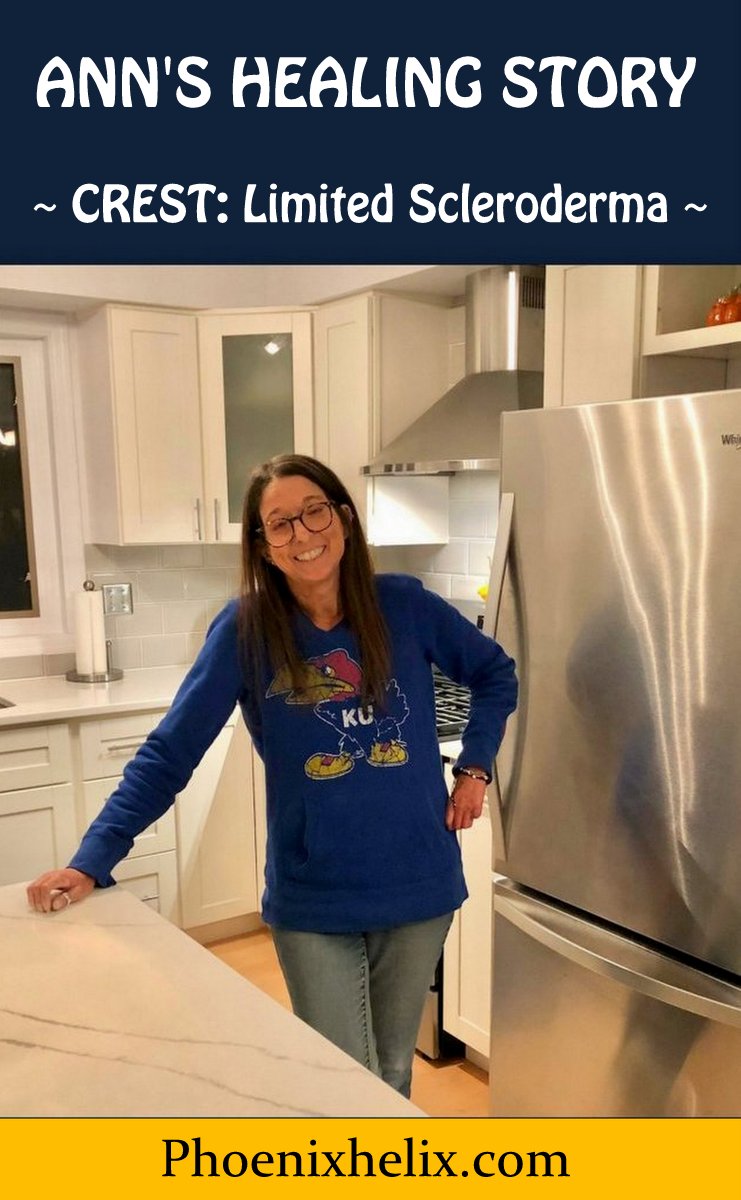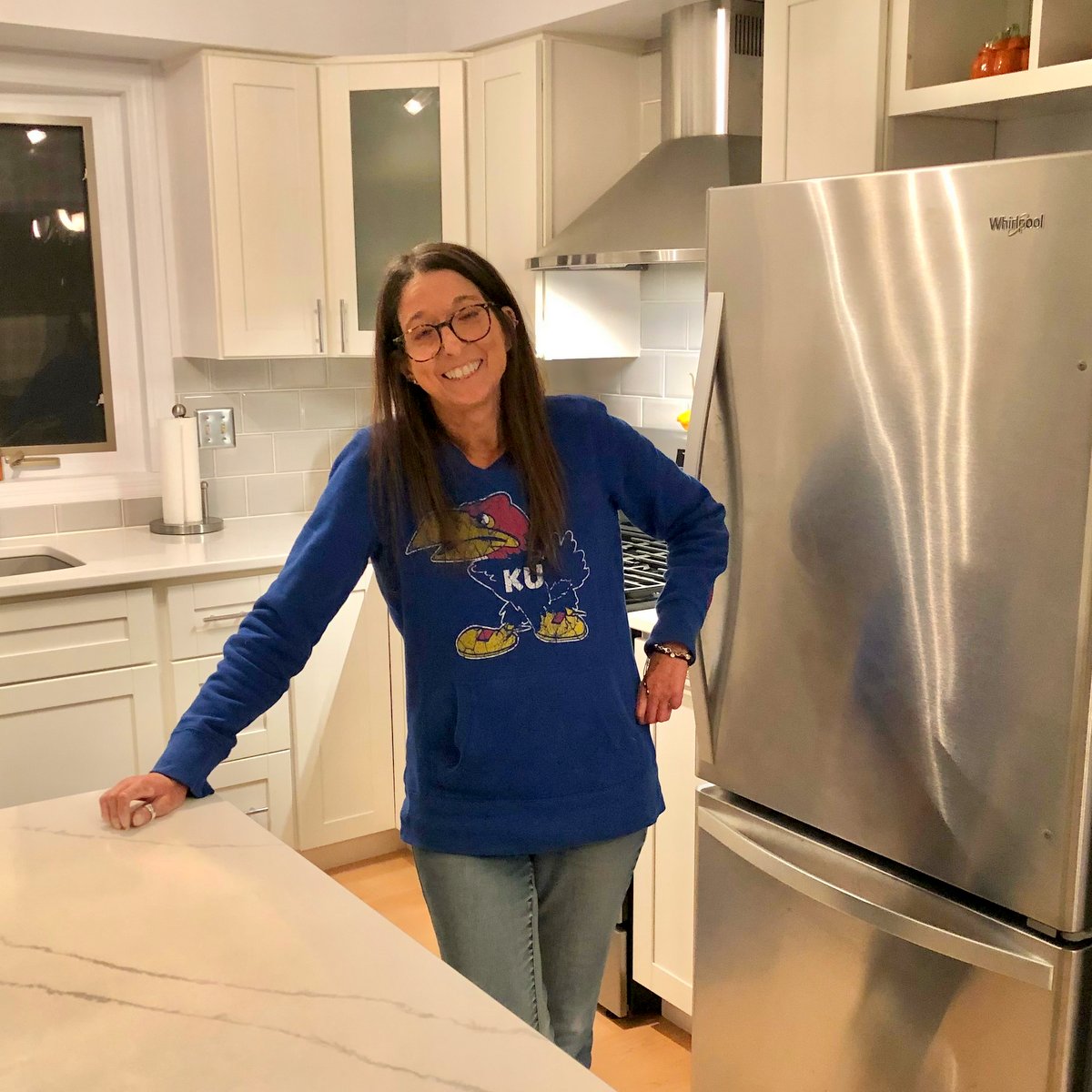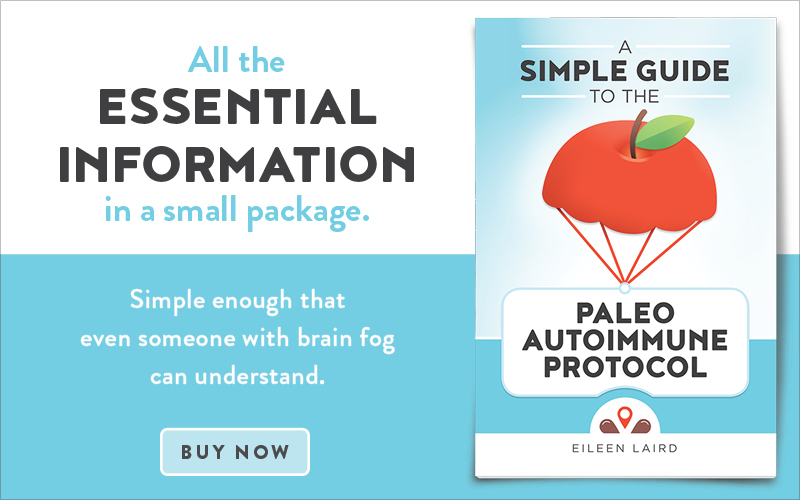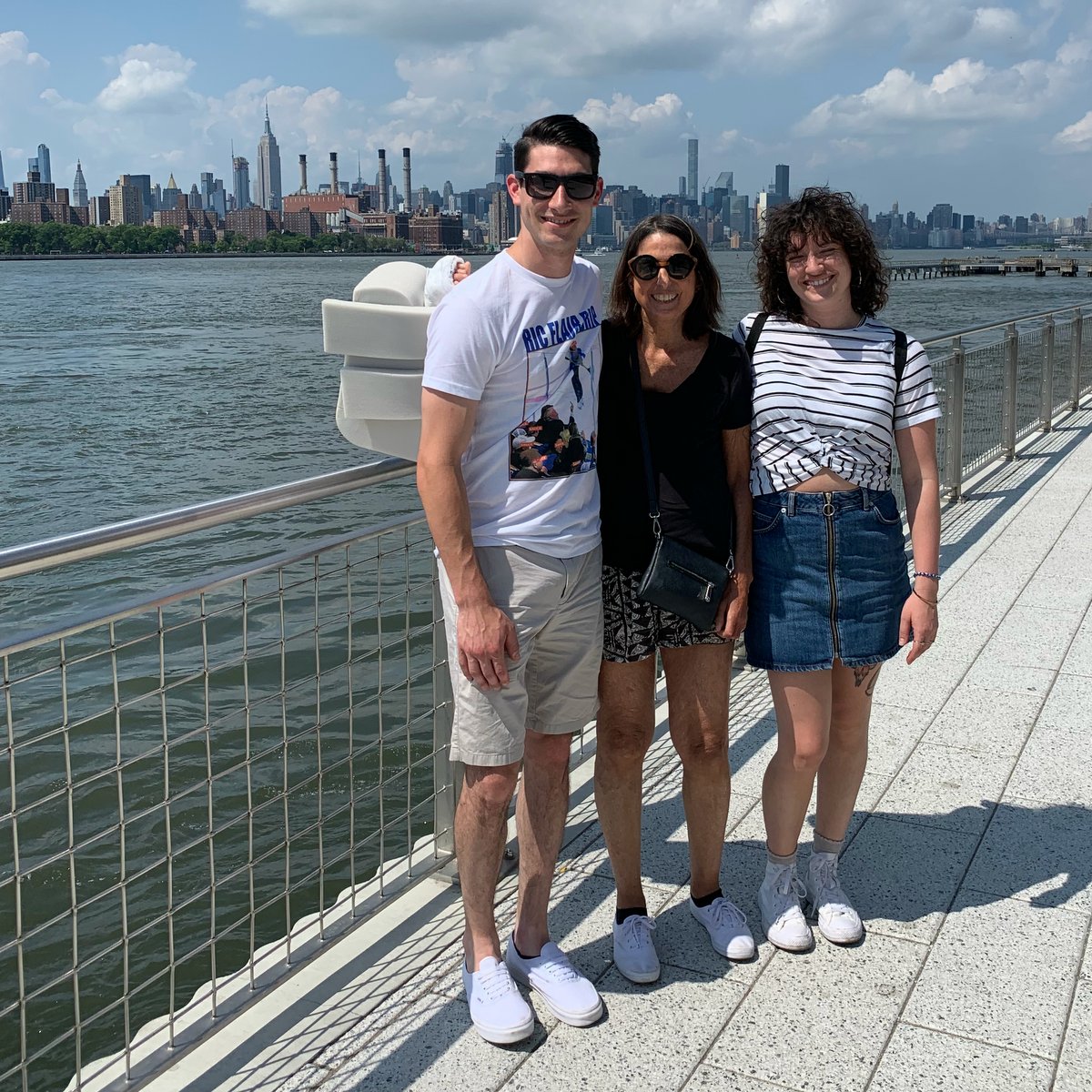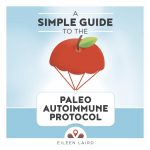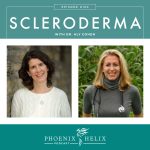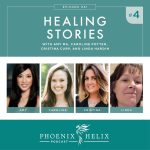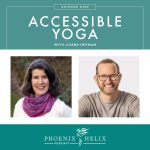“I believe absolutely that it is in sharing the most vulnerable aspects of our journeys that we support each other to find grace and strength and healing during equally challenging times.”
~ Baden Lashkov
Living a Resilient Autoimmune Life
After 23 years of living with scleroderma, Ann Mogilevsky has experienced both lows and highs. She’s become an expert on her condition, because she had to be. Many doctors didn’t offer the care she needed because scleroderma is a rare condition that very few doctors truly understand. Now, she has a great healthcare team, and she is at the center. She’s also become more empowered over the years with her daily life choices. She actively supports her health through diet, meditation, exercise, sleep, and other forms of self-care. As she puts it: “I have the capability to overcome a lot of what happens to me, and I am in control of my autoimmune journey.”
What were your first symptoms? When did you learn what it was?
It turns out that Raynaud’s is a symptom of scleroderma, and I have been dealing with that my whole life without realizing it could have been a symptom of something else. Raynaud’s restricts blood circulation in the fingers and toes, making them cold, numb and discolored in response to cold temperatures or stress.
But the first symptom that I knew wasn’t normal was when my hands swelled like baseball mitts. I called my doctor, and instead of having me come to the office, he just prescribed water pills, saying the swelling was a sign of age. I was 40 years old at the time. When the water pills didn’t work, I called back, and he still didn’t ask to see me. He prescribed prednisone next. That didn’t work either. He never saw me in person! I didn’t realize how I needed to be more of an advocate for myself. I had never been sick and never thought about the possibility of an autoimmune disease.
Eventually, I called another doctor who actually did a physical exam and ran a battery of tests. She discovered that my hemoglobin was low and suspected internal bleeding. She referred me to a gastroenterologist. I also have a family friend who is a doctor and after listening to what was going on, they said that seeing a rheumatologist would be a good idea. The rheumatologist was the one who eventually diagnosed me with scleroderma via a nailfold capillary test and a positive ANA (antinuclear antibodies) test. The rheumatologist was also the one who recognized the cause of the internal bleeding (GAVE – also called watermelon stomach)
Can you describe what it was like for you when your condition was at its worst?
With scleroderma, there are different stages you go through as the disease progresses. In the beginning, as the skin hardened, it changed how I moved. I could no longer sit crisscross applesauce, my range of motion was limited. I could no longer zip up anything on the back of me. It hurt to sit down. Simple daily tasks became difficult. It was an adjustment. Another problem was the watermelon stomach. This is where the lining of the stomach starts to bleed. My hemoglobin crashed to a 5.5 (normal is 12). It is a slow bleed that took over 27 endoscopies, 2 iron and 2 blood infusions, and over 10 years to get it under control. Years later, I developed sclerodactyly – the hardening of the skin on the hands that causes the fingers to curl inward. My fingers curled inward to the point that I could barely use my hands. I had surgery to both hands, in which they broke my fingers and reset them to a fixed position where my hands now function.
What medical treatments have you tried? What was helpful, and what wasn’t?
It’s been 23 years, so I’ve tried a lot of things. Medically, I went to conventional rheumatologists for many years. I still see a conventional rheumatologist locally, but I added an integrative rheumatologist to make my team stronger. She lives in a different state, so we have telehealth consultations. I really like her holistic approach. She emphasizes nutrition, which was never discussed by my other doctors. She does more detailed bloodwork, like a vitamin D panel. She also looks for ways to solve issues without using pharmaceuticals whenever possible. For example, using licorice to calm my stomach. I also take some other supplements: Vitamin D and C, fish oil, multivitamin, probiotic, magnesium, strontium, and a bone formula.
In terms of alternative treatments, I have done acupuncture, which really helped alleviate pain in the beginning. I also received a special type of massage which focused on fascia, and that helped with the tightening of my skin. It was intense! It wasn’t relaxing, but it was beneficial. I did it as often as I could afford to, which was about twice a month. Eventually my therapist moved out of town, and I couldn’t find anyone else trained in that technique. The good news is that my skin seemed to stabilize. Now, I seek out massage for different reasons – as a relaxing form of self-care. I try to do something nice for myself once a month, whether it’s a massage or a pedicure.
Which healing diet(s) did you try, and what were the results?
I started with Dr. Amy Myers 30 day cleanse. I then did the Paleo Autoimmune Protocol. I did the elimination phase for 30 days, and that began reintroductions.
One of the most challenging symptoms of scleroderma for me is fecal incontinence. Before changing my diet, I would have loose, uncontrolled bowel movements. It wouldn’t be a lot but enough that it soiled my underwear. These issues started 15 years ago. One very frustrating aspect for me was that I tried to tell doctors what was going on. When I had my 5 year colonoscopy, I told the gastroenterologist and he said everything looks good, that I just needed more fiber. No one mentioned that digestive issues can be a problem with scleroderma. I also added to this problem because I was very embarrassed to tell doctors. It’s very hard for me to talk about. This is how my diet journey started. I was determined to find a solution to my stomach issues. I was so glad when I found out about AIP and leaky gut. I recently had a guest on my scleroderma podcast, Dr. Elizabeth Volkmann, and she talked in detail about scleroderma and the gut. Finally! I am so glad that the information about the gut microbiome is becoming more prevalent.
Changing my diet made a big difference in my gut health. Loperamide is an anti-diarrheal drug I’ve been prescribed to manage fecal incontinence. Before changing my diet, I would need up to 6 pills a day. Now I take 2 pills every other day. I still get fecal incontinence but it is very mild, and it’s no longer loose, but more like a pellet!
Beyond autoimmune symptoms, did other areas of health improve?
My blood pressure is a lot better. I still have to take medication but a very low dose.
What’s your diet look like today?
I still do a lot of the AIP diet. I don’t eat gluten, refined sugars, dairy, or nightshades. I have done some food reintroductions and will try foods intermittently to see if I have a reaction. When a food reintroduction fails, my symptoms are always digestive: stomach cramps or loose stools. So, I get pretty immediate feedback on the foods that do and don’t benefit my health. For that reason, I really watch what I eat.
What other things do you do outside of diet to support your health and healing?
I keep a journal for what I eat, sleep, bowel movements and what I am grateful for! I meditate daily. I exercise daily. I do strength training, yoga and cardio (elliptical). I get outside and walk when the weather is nice in Minnesota. My first rheumatologist had said try to get ahead of the disease, to keep my heart and lungs strong. And I think both the yoga and the cardio workouts have really helped my range of motion and my lung capacity. I also try to go to sleep at the same time nightly (around 11 pm and up by 7 am).
I do a lot of these things for the mental health benefits. Feeling good about myself keeps me from getting depressed about my symptoms, but I think that helps with my autoimmune disease too. I think poor mental health can make physical symptoms worse.
What role has medication played in your autoimmune journey?
I am lucky that I have not needed a lot of medication. My doctors know that if it is possible I want to stay away from medications, but I will take them when needed.
What symptoms still remain?
While I haven’t been able to reverse my scleroderma symptoms, I have stopped the progression. For example, my skin stopped tightening. It tightened just above my ankle and just above my wrist. My face has tightened but not as much as compared to others. My stomach problem is under control. I no longer have internal bleeding. My lungs are minimally scarred but have not changed. I do not have internal organ problems.
I do still have Raynaud’s – it especially affects my hands. I also have calcinosis, the formation of calcium deposits in soft tissue, and it’s one of the symptoms of scleroderma that usually comes later in the progression of the disease. I have had surgery to remove some that were located on my buttocks. They seem to appear at pressure points. Right now they are located on my right hand (probably caused by all my cooking!). I also have telangiectasia (often called spider veins). They’re broken blood vessels near the surface of the skin, and I have this on my face, so I always wear a lot of makeup before leaving the house.
With all that said, everything is manageable right now.
With autoimmune disease, there are many potential triggers and root causes. Were there any events in your life that you think contributed to your diagnosis?
I would say stress. It was definitely a busy time in my life. I was raising 2 children and teaching full time. I thought I could do both well and tried to give 110%. I had this idea that I was going to be a career mom, but I found that I really wanted to be a stay-at-home mom. This was not possible, so I had a struggle within. It was a lot of emotions and a lot of pressure.
Who supports you in your healing journey?
My adult children, my mom, my boyfriend, and lots of friends.
What’s the hardest part of maintaining a healing lifestyle for you?
The diet is the hardest part, but now that I am retired it is much easier. I still fall off the wagon sometimes. Although I have not had gluten in 5 years, I do indulge in other ways. When I am feeling good, I think oh I can eat that!!! LOL. Then, my body tells me otherwise.
What advice would you give to people with autoimmune disease who are just starting to consider diet and lifestyle changes?
That it may be hard to change eating habits and lifestyles while dealing with your autoimmune journey, but it is worth it. In the long run you will feel a lot better.
What does autoimmune resilience mean to you?
That I have the capability to overcome a lot of what happens to me, and that I am in control of my autoimmune journey.
You were inspired to start a podcast. Please tell us more about that.
It’s called Mogil’s MobCast: A Scleroderma Chat. I recently retired after 39 years teaching, and I had more time to research ways to manage my scleroderma symptoms. I found the AIP diet in my research. I then started to listen to as many podcasts as I could find that dealt with diet and autoimmune disease, but nothing was specific to scleroderma. Scleroderma has certain issues that are specific to only people afflicted with the disease. That is when I decided I could give back to the scleroderma community by doing a podcast.
Ann with her children: Josh and Jenna
Other Healing Stories
This is part of a series of autoimmune success stories. Click here to see the full list. They are also a regular feature of my podcast: Phoenix Helix.

